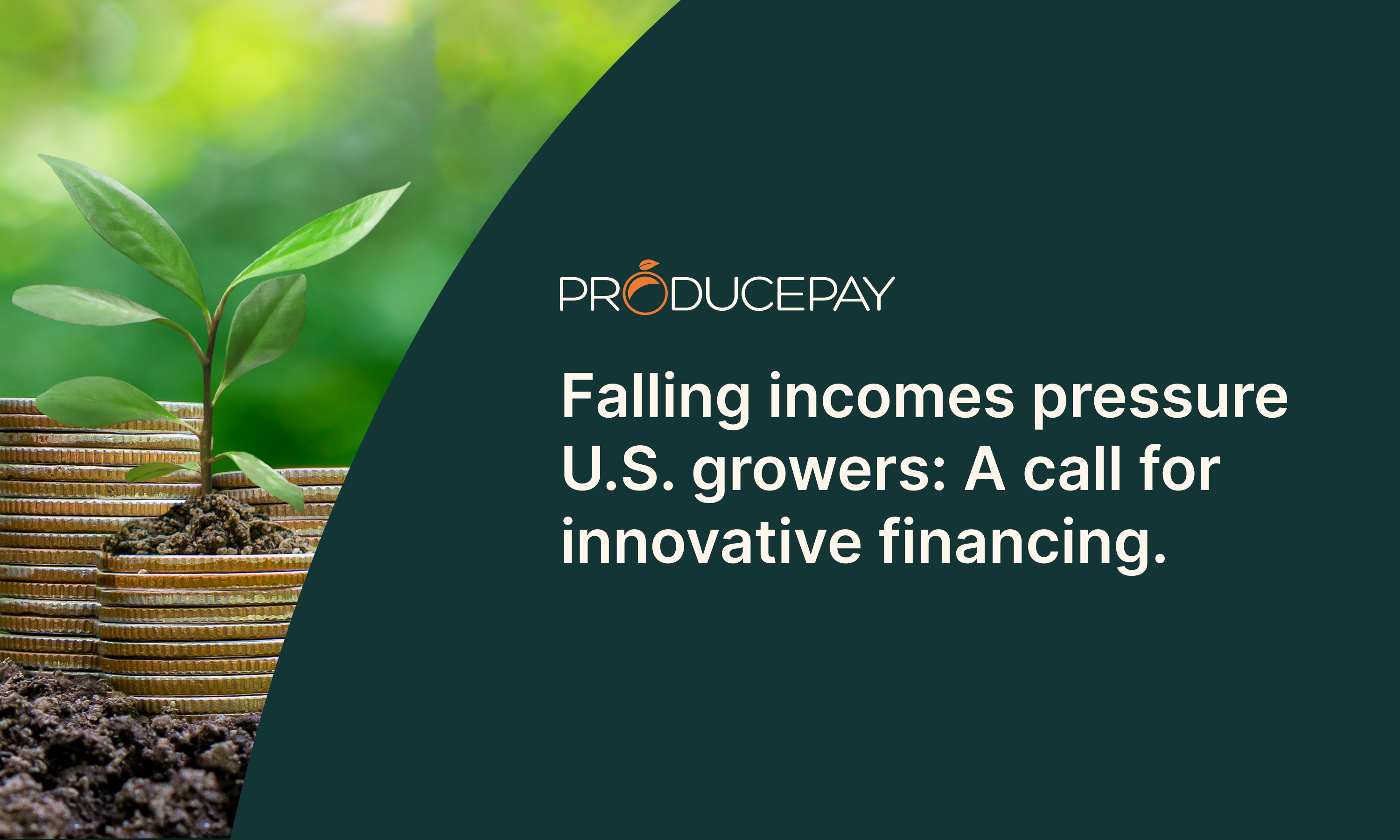
Falling farm income pressures U.S. growers: A call for innovative financing
The latest USDA farm income forecast reveals a challenging year for U.S. agriculture, with net farm income expected to have fallen to $140.7 billion in 2024. This marks a 4.1% decline from 2023 and a striking 22.6% drop from the 2022 peak of $181.9 billion.
Adjusted for inflation, this represents a 6.3% decrease, underscoring the financial strain that continues to impact agricultural producers. Although the forecast still exceeds the 20-year average, ongoing volatility in the sector presents significant challenges as farmers head into 2025.
Crop producers face the hardest hit
Crop producers are facing the greatest challenges, with total crop receipts forecast to fall by $25 billion (-9.2%), reaching $246.2 billion. This is the second consecutive year of substantial declines, driven by falling commodity prices and rising input costs.
Corn and soybean producers have been particularly affected, with receipts expected to have dropped by 20.8% and 12.3%, respectively. Cotton farmers faced even steeper losses, with receipts forecast to decline by 26.9%.
For fresh produce, vegetables and melons anticipate a modest $1.7 billion increase (6.7%), but fruits and nuts are forecast to fall by $0.6 billion (-2.1%). Reduced global demand, increased international competition, and stagnant commodity prices exacerbate the challenges, continue to erode farm income.
Rising costs and shrinking government support
While total production expenses projected a 1.7% in 2024, due to lower feed, fertilizer, and fuel costs, other key expenses continue to rise. Labor costs are expected to increase by 6.1%, while interest expenses are set to rise by 4.1%.
Meanwhile, direct government payments are also expected to have decreased to $10.6 billion (-13.6%). This reduction is primarily due to lower Dairy Margin Coverage payments and reduced disaster assistance. With the diminishing safety net of government, many growers are increasingly turning to agricultural loans to keep operations afloat.
Mounting farm debt and financial strain
Farm sector equity is forecast to have grown by 5.2% to $3.68 trillion in 2024, largely due to rising farm real estate values. However, this increase is overshadowed by the record-high farm debt, which is projected to reach $542.5 billion—a 4.5% increase from 2023.
Although the debt-to-asset ratio is expected to improve slightly, a 6.9% drop in working capital underscores the financial strain on producers. These indicators signal the growing need for innovative farm financing solutions that support both day-to-day cash flow and long-term sustainability.
Reducing volatility to maintain healthy margins
For fresh produce growers, reducing volatility is crucial to maintaining healthy margins and ensuring continued operations and growth. By adopting Predictable Commerce practices, growers can better navigate unpredictable factors such as weather events while also building resilience to economic challenges, including rising labor and input costs, volatile exchange rates, and pricing fluctuations.
Solutions like ProducePay’s Predictable Commerce Programs help growers achieve predictable income, increase profits, and enhance their market presence with top retailers. This stability enables growers to plan for sustainable growth, rather than merely surviving season by season.
Leveraging innovative farm financing solutions
As farmers grapple with these challenges, maintaining liquidity and access to financing is critical to sustaining operations. ProducePay stands out as a uniquely differentiated partner in the fresh produce industry, offering tailored financing solutions designed to address the specific challenges faced by growers at every stage of the agricultural and sales cycle.
Our Pre-Season Financing empowers farmers with the working capital they need to manage harvest expenses and invest strategically in growth. Unlike traditional financing options, our solutions are free from conventional limitations, enabling them to operate with greater financial agility.
Quick-Pay further strengthens liquidity by providing faster payments for orders, helping to bridge cash flow gaps and invest in growth during the growing season. Whether addressing immediate cash needs or planning for long-term business expansion, Quick-Pay ensures financial stability for agribusinesses to operate on its own terms, enabling a smoother path to profitability.
Source: USDA-ERS

